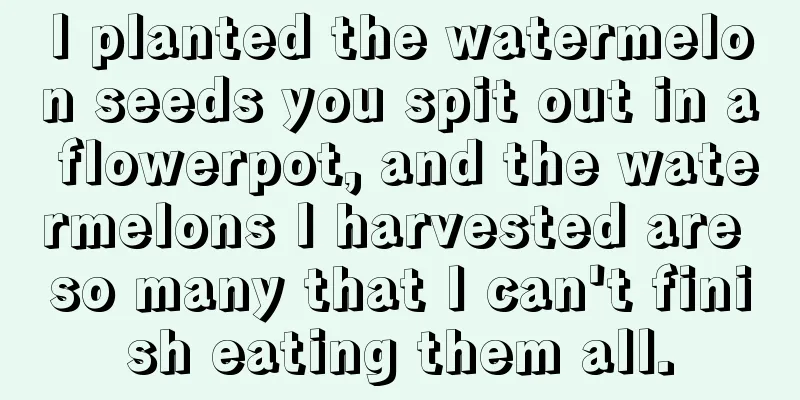Precautions and operation methods for repotting Clivia

Things to note when repotting CliviaClivia generally needs to be repotted every one or two years. Spring and autumn are the most suitable seasons for repotting. March and October have a suitable temperature and a mild climate, which are conducive to the growth of the plant after repotting. However, the high temperatures in summer and low temperatures in winter make it difficult for the plant to adapt to the new pot after repotting, affecting its survival, growth and flowering. 1. After repotting, place the Clivia in a ventilated place with diffused light, avoid excessive darkness and direct sunlight, keep the potting soil slightly moist, and do not apply fertilizer during the maintenance period after repotting. 2. The new flower pot should be selected according to the size of the plant. A pot that is too small may cause the plant to be malnourished, and a pot that is too large may cause root rot. It is best to use a ceramic pot or a purple clay pot. Old pots can also be used after disinfection and exposure to the sun. Key points for repotting Clivia1. Root pruning and drying: When repotting Clivia, you should prune off old roots, roots infected with diseases and insect pests, and roots that grow slowly and weakly. After pruning, soak the roots in carbendazim to disinfect and sterilize them, and then dry them in the sun for 2-3 days before planting. 2. Watering: Do not water the Clivia immediately after repotting. Place it in scattered light for about half a month. Wait until the soil is completely dry before watering. Water slowly with small amounts of water to prevent water accumulation in the soil. 3. Soil for repotting Clivia likes loose, moist, slightly acidic soil. It can be planted with mostly leaf mold or peat soil, or a mixture of oak leaves, pine needles, river sand, and a small amount of charcoal. However, the self-prepared soil needs to be exposed to the sun for sterilization before use. |
Recommend
How to sow Lithops
1. Sowing time If you want to propagate Lithops b...
How to cultivate the succulent Jade Leaf
Succulent Jade Plant Growth Conditions The succul...
Can Margarite be planted in the yard?
Can Margarita be grown in the yard? Marguerite ca...
What to do if the leaves of green radish are frozen to death
1. Treatment methods When you find that the leave...
Can fallen leaves be used as fertilizer if buried directly in the soil? How to ferment leaves to make fertilizer for flowers?
When we grow flowers and plants, we often use soi...
What are the cultivation methods and precautions of wood fragrance flowers?
Introduction of wood fragrance flower The common ...
Can hosta be grown indoors?
1. Is it possible? The plant Hosta can tolerate p...
What is the best month to plant cherries?
When to plant cherries Cherries are generally pro...
How to propagate glass jade by cuttings and precautions How to propagate glass jade by cuttings
Glass Jade is a plant of the Impatiens family and...
Throw away the fertilizer quickly! Use it to grow flowers, it doesn't cost a penny, the green radish can grow several meters
It is true that the growth of any plant cannot be...
When is the best time to plant sweet potatoes?
1. When is the best time to plant sweet potatoes?...
What are the cultivation methods and precautions of drug-absorbing grass
Method of cultivating drug-absorbing grass The dr...
Brazilian beauty breeding methods and precautions
Brazilian Beauty is relatively easy to raise beca...
Pinto beans planting time and method
Pinto bean planting time When planting flower bea...
How to propagate Bauhinia
Cutting propagation of Bauhinia ovata Cutting pro...









